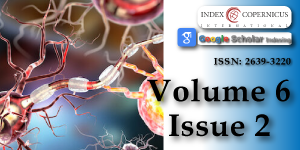A case of hemiplegia with a cerebrovascular accident in which motor imagery of finger extension on the affected side with finger extension on the unaffected side was effective - A study using F-waves
Main Article Content
Abstract
We investigated the effect of exercise therapy by simultaneously using motor imagery of thumb or all finger extension on the affected side and thumb or all finger extension exercise on the unaffected side by using the F-wave, which is used to measure the excitability of anterior horn cells to devise an appropriate exercise therapy using motor imagery for patients with increased muscle tone of the thumb muscles on the affected side.
Tasks 1, 2, 3, and 4 involved motor imagery of thumb extension on the affected side, motor imagery of finger extension on the affected side, motor imagery of thumb extension on the affected side based on thumb extension on the unaffected side, and finger extension on the affected side based on finger extension on the unaffected side, respectively; conducted in three trials, with one week or more between each trial. Each task was performed for one minute, with a five-minute interval between tasks. The F-waves from the thenar muscles were recorded with median nerve stimulation on the affected side before and during the tasks. The relative values of the F-wave data of the task and the F-wave data before (resting state) and during the tasks were calculated. In results, the relative data of the F/M amplitude ratio in task 4 was lower than that in the other tasks in three trials. In conclusion, motor imagery of finger extension on the affected side with finger extension movement on the unaffected side was effective for improving the muscle tone of the thenar muscles on the affected side.
Article Details
Copyright (c) 2022 Suzuki T, et al.

This work is licensed under a Creative Commons Attribution 4.0 International License.
Suzuki T, Bunnno Y, Onigata C, Tani M, Uragami S. Excitability of spinal neurons during a short period of relaxation imagery. Open Gen Intern Med J 2014; 6: 1–5.
Suzuki T, Bunnno Y, Onigata C, Tani M, Yoneda H, Yoshida T, et al. Excitability of spinal neurons during relaxation imagery for 2 minutes. Int J Neurorehabilitation Eng 2014; 1: 105.
Kimura J. F-wave velocity in the central segment of the median and ulnar nerves. A study in normal subjects and in patients with Charcot-Marie-Tooth disease. Neurology. 1974 Jun;24(6):539-46. doi: 10.1212/wnl.24.6.539. PMID: 4857549.
Eisen A, Odusote K. Amplitude of the F wave: a potential means of documenting spasticity. Neurology. 1979 Sep;29(9 Pt 1):1306-9. doi: 10.1212/wnl.29.9_part_1.1306. PMID: 573413.
Kobayashi M, Hutchinson S, Schlaug G, Pascual-Leone A. Ipsilateral motor cortex activation on functional magnetic resonance imaging during unilateral hand movements is related to interhemispheric interactions. Neuroimage. 2003 Dec;20(4):2259-70. doi: 10.1016/s1053-8119(03)00220-9. PMID: 14683727.
Trompetto C, Assini A, Buccolieri A, Marchese R, Abbruzzese G. Motor recovery following stroke: a transcranial magnetic stimulation study. Clin Neurophysiol. 2000 Oct;111(10):1860-7. doi: 10.1016/s1388-2457(00)00419-3. PMID: 11018503.

